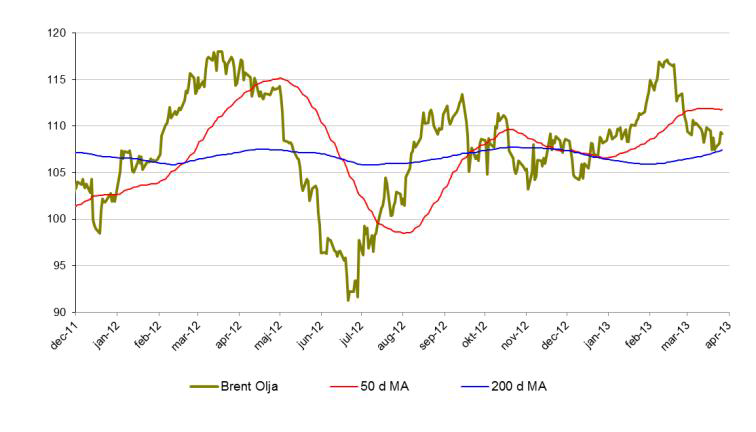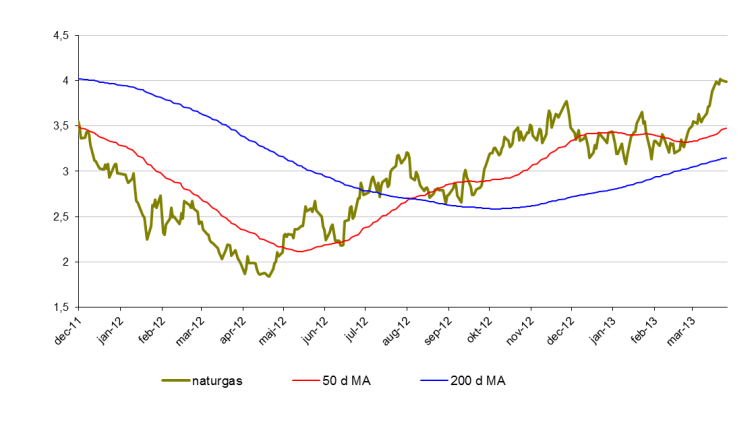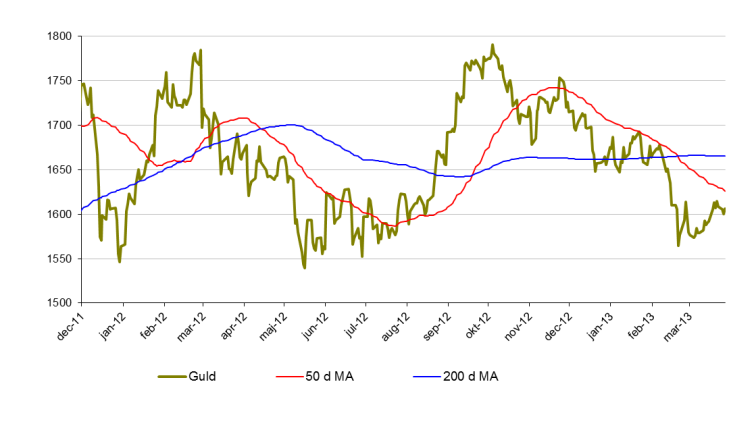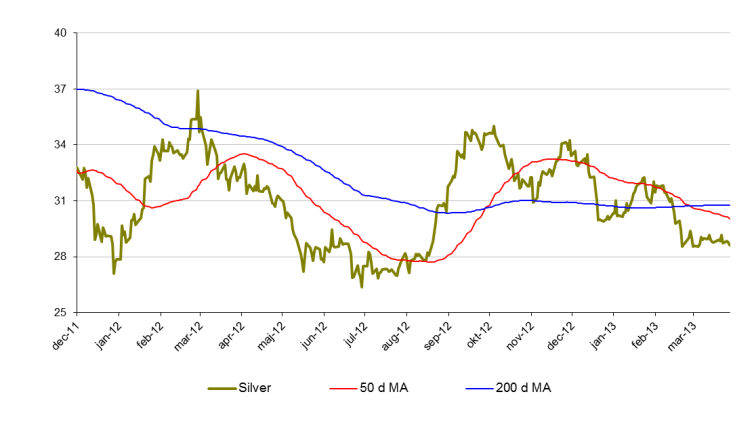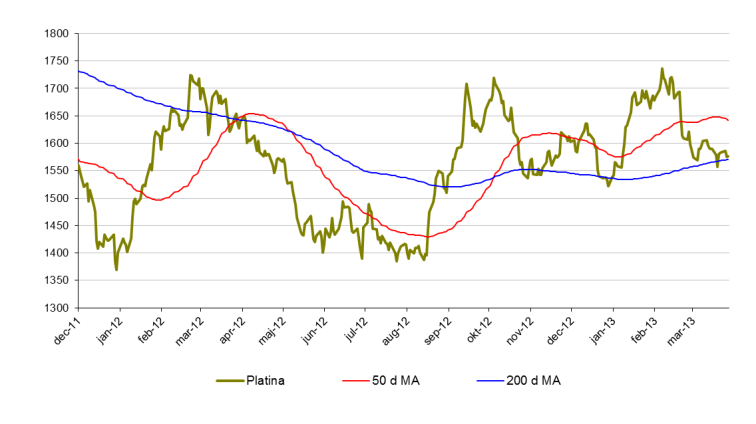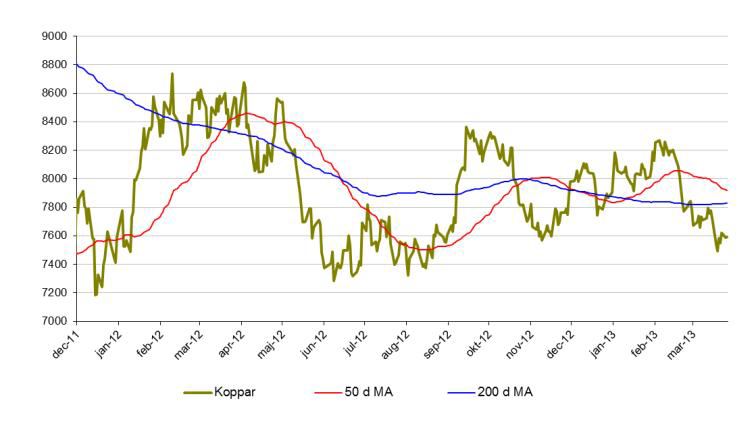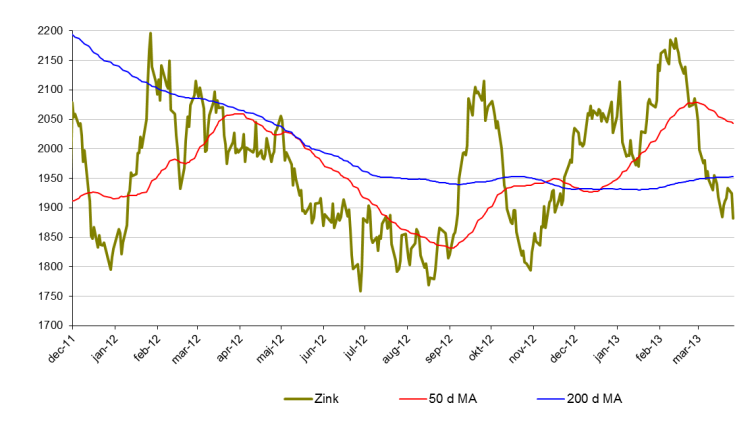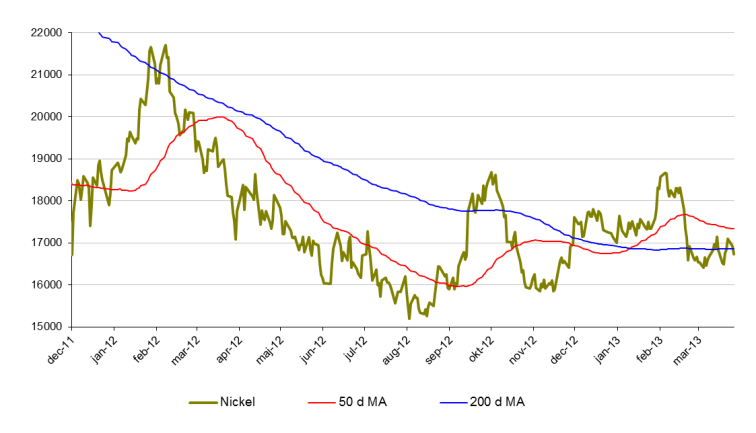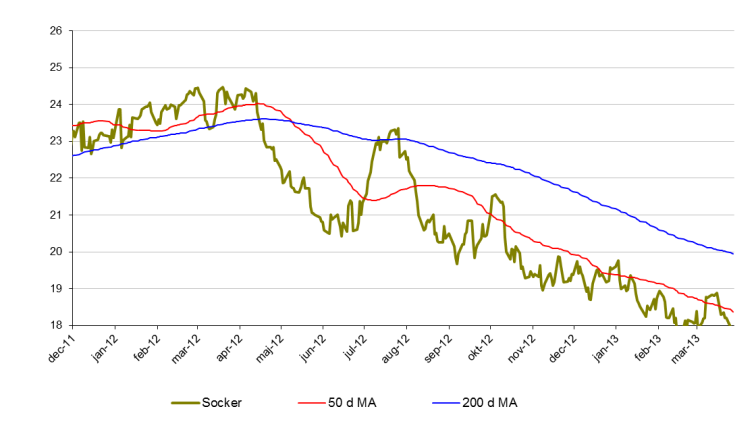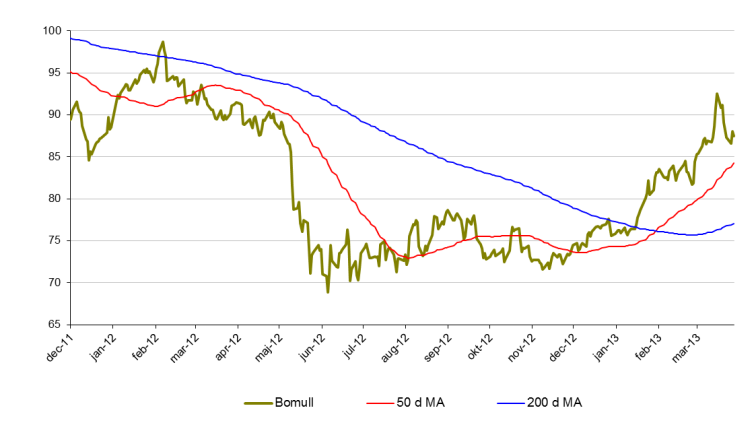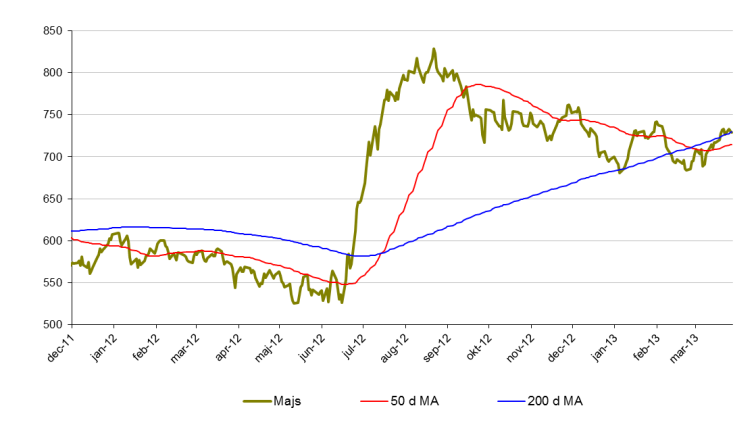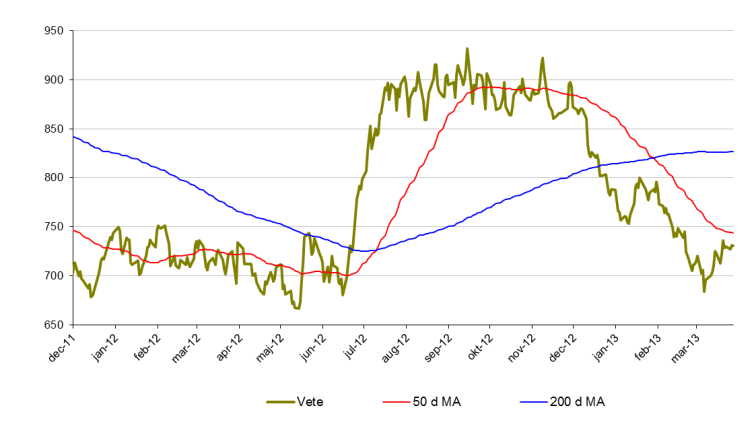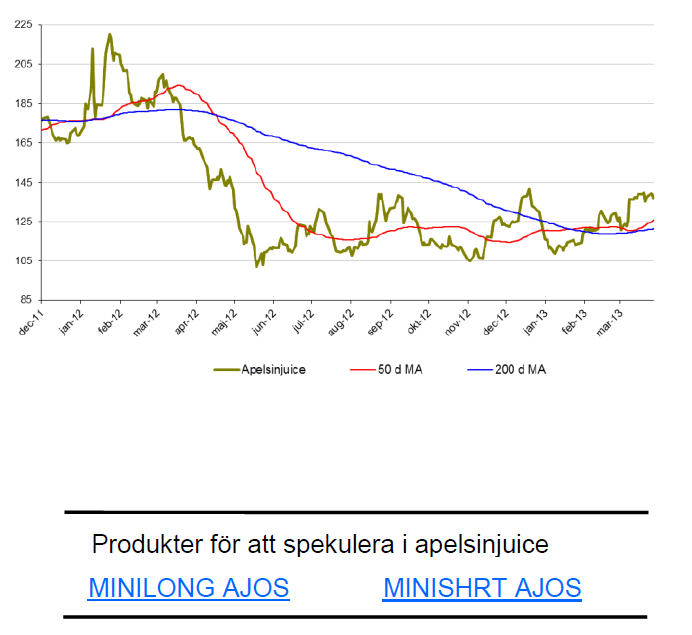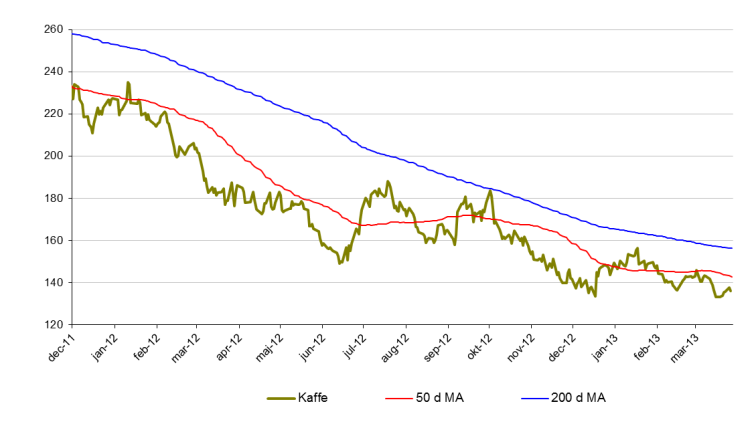Analys
SIP Nordic – Råvaruguiden – april 2013
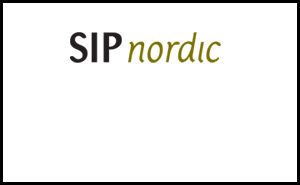
 Kopparstyrd tågtidtabell
Kopparstyrd tågtidtabell
Jag tillhör skaran av de hundratusentals människor som varje dag sätter sig på ett tåg för att ta mig in till jobbet. Den senaste tiden har dessa irriterande tågförseningarna blivit fler och fler. Det är dock inte ”oväntat” snöoväder som varit orsaken de flesta gångerna utan kopparstölder.
Koppar är en mycket använd industrimetall som används lite varstans i vårt samhälle, däribland ledningar som används i tågtrafiken. Om en kopparledning rivs av kan det leda till timslånga förseningar och i många fall inställda tåg.
Högre kopparpris tenderar att attrahera personer vars respekt för lag och ordning inte är jättehögt. Med ett högre kopparpris kommer ökade stölder och fler tågförseningar.
Studier visar att det faktiskt finns ett samband mellan världspriset på koppar och kopparstölder. Under sensommaren 2011 då kopparpriset föll nästan 20 % minskade även antal kopparstölder dramatiskt, med upp till 40 % färre stölder under denna period. Sedan dess står kopparpriset högre och jag står allt oftare på perrongen och lyssnar på meddelanden om inställda tåg. Ett ytterst irriterande samband.
Jag ser dock lite ljusare på min framtida pendlartid. Lagren av koppar är de största på nästan tio år och spekulanter radar nu upp sig för att köpa kontrakt för nedgång. Någon som kan tala för en nedgång i kopparpriset.
Jag frågade Tobbe Rosén om hans tekniska syn på koppar och han skrev
”Priset på koppar har fallit sedan toppen i början av 2011 och befinner sig i ett lågvollaläge som går mot sitt slut. Det mest troliga är att utbrottet sker på ovansidan men det avtagande momentumet indikerar en viss svaghet. Oavsett om utbrottet sker uppåt eller nedåt är det väl värt att följa.”
Fundamental analys talar alltså för att kopparpriset ska ned. Den tekniska analysen visar också på en viss svaghet.
För att jag ska slippa att bli stående på perrongen i framtiden så hoppas jag verkligen att analysen är rätt.
Alexander Frick
Råvaror – Energi
Brent olja
- Det har blivit dags att summera det första kvartalet för råvarorna och brent har åkt berg och dalbana.
- För året är brentoljan ned drygt 1 %.
- Sedan toppen i början av februari har brent tappat 8 %.
- Minskad import från USA samt ökade lager bidrar till brentoljans nedgång.
- Uttalande från Ben Bernanke (FED) om en paus i stimulanspaket påverkar även priset på olja negativt.
- Bland spekulanter (bland annat fonder) ökas de långa positionerna vilket kan indikera att en vändning uppåt är på väg.
Naturgas
- Naturgas har startat året starkt. Upp nästan 17 % för året.
- I princip hela uppgången har skett under mars månad.
- Kallt väder i USA bidrar uppgången.
- Naturgas testar nu en viktig nivå kring 4$. Om Kursen etablerar sig över denna nivå kan vi mycket väl se högre kurser framöver.
Råvaror – Metaller
Guld
- Guld befinner sig i ett otroligt spännande läge. Sedan årets början är guld ned nära 3 %.
- Många väntade sig en större reaktion på krisen i Cypern.
- Under mars månad är guld dock endast upp 1,5 %.
- Riskaptiten är fortsatt hög varför guldet mycket väl kan fortsätta att falla.
- Vi såg även sett s.k. dödskors i guld i februari vilket betyder att 50 dagars medelvärde skär 200 dagars uppifrån. Detta brukar kunna tolkas som en signal om nedgång.
Silver
- Silver har den senaste månaden stabiliserats kring 28,5$ med mycket små rörelser.
- För året är silver ned 6,5 %.
- Likt guld tar silver stryk av att riskaptiten ökat och behovet av en ”säker hamn” är svalt.
- Tecken på framförallt en starkare amerikansk ekonomi driver priset på silver nedåt.
- Motståndsområde kring 29,5$ måste tas ut för att silver ska bli intressant för uppgång.
Platina
- Platina är fortsatt på plus för året. 3,5 % sedan sista december.
- Man bör dock komma ihåg att platina tappat nästan 10 % sedan i början av februari.
- Platina handlas återigen under guldet och en pairtrade likt den jag beskrev i februari kan åter vara intressant.
- Stödzon runt 1550$ är intressant att bevaka.
Koppar
- För året är koppar ned 4 % och det finns mycket som talar för att tappet ska fortsätta.
- Lagren av koppar är det största på nästan 10 år samtidigt som fler och fler spekulanter köper korta positioner.
- Debaclet i Cypern sätter även sina spår i kopparpriset.
- Positiv konsumtionsstatistik från Kina hjälper även föga eftersom lagren är så höga.
Zink
- Priset på zink dyker. För året är zinkpriset ned knappa 10 %.
- Likt koppar har Cypernkrisen satt sina spår.
- Zink handlas snart i regionen kring en rad stöd (1800$). Rekyler där kan vara intressanta att bevaka.
Nickel
- Nickel är för året ned drygt 2,5 %.
- Under februari tappade nickel nästan 11 %.
- Nickel presterade sämst av alla basmetaller under 2012. Slutsiffran blev -8 % för 2012.
- Nickelmarknaden är fortsatt mättad med ökande lager.
- Många stora projekt inom nickelproduktion är redan finansierade och irreversibla vilket kommer att öka tillgången av nickel ytterligare.
Råvaror – Jordbruk
Socker
- Sockers kräftgång fortsätter. Sedan oktober förra året är sockerpriset ned 18 %.
- För året är sockerpriset ned drygt 8 %.
- En anledning till det fortsatta prisfallet är att nuvarande nivåer inte motiverar sockerproduktion. Andra grödor eller etanol ses som mer attraktiva.
Bomull
- Bomullspriset utvecklas starkt under början av 2013.
- För året är priset på bomull upp 17,3 %.
- Under mars månad är bomull upp 5,2 %.
- Sedan november 2012 är priset på bomull upp 26 %.
Majs
- Priset på majs har återigen vänt uppåt.
- För året är priset på majs upp nästan 6 %.
- Sedan förra årets extremtorka har majs legat i en negativ trend. Denna trend är nu bruten till följd av en period av torrare väder.
- Stora skördar väntas dock och vädret ser ut att bli bättre.
- Följ således majs med försiktighet.
Vete
- Likt majs rekylerade vete upp över den negative trendlinje som funnits sedan förra sommaren.
- Försiktighet gäller även här.
- För året är vete ned 5 %.
- Under mars månad steg priset på vete med 3,5 %.
Apelsinjuice
- Vi har länge bevakat apelsinjuice i Tradingklubben.
- Apelsinjuice känns svårtippad och 143-nivån bör brytas innan vi intresserar oss för uppgång.
- För året är apelsinjuice upp 7 %.
- Priset på apelsinjuice är fortfarande 70-80 % högre än botten 2009. Fallhöjden är således hög. Mycket hög.
Kaffe
- Kaffe ligger fortfarande i en långsiktigt nedåtgående trend.
- För året är kaffe ned 7 %.
- Det är ökade lager som driver priset nedåt.
- Viktigt stödområde kring 135$.
[box]Denna uppdatering är producerat av SIP Nordic och publiceras i samarbete och med tillstånd på Råvarumarknaden.se[/box]
Ansvarsbegränsning
Detta produktblad utgör endast marknadsföring och har sammanställts av SIP Nordic Fondkommission AB.
Innehållet ger inte fullständig information avseende det finansiella instrumentet. Investerare uppmanas att del av prospekt och slutliga villkor, vilka finns tillgängliga på: www.rbsbank.se/markets, innan ett investeringsbeslut tas.
Förekommande exempel är simulerade och baseras på SIP Nordics egna beräkningar och antaganden, en person som använder andra data eller antaganden kan nå andra resultat. Administrativa avgifter och transaktionsavgifter påverkar den faktiska avkastningen.
Analys
Tightening fundamentals – bullish inventories from DOE

The latest weekly report from the US DOE showed a substantial drawdown across key petroleum categories, adding more upside potential to the fundamental picture.

Commercial crude inventories (excl. SPR) fell by 5.8 million barrels, bringing total inventories down to 415.1 million barrels. Now sitting 11% below the five-year seasonal norm and placed in the lowest 2015-2022 range (see picture below).
Product inventories also tightened further last week. Gasoline inventories declined by 2.1 million barrels, with reductions seen in both finished gasoline and blending components. Current gasoline levels are about 3% below the five-year average for this time of year.
Among products, the most notable move came in diesel, where inventories dropped by almost 4.1 million barrels, deepening the deficit to around 20% below seasonal norms – continuing to underscore the persistent supply tightness in diesel markets.
The only area of inventory growth was in propane/propylene, which posted a significant 5.1-million-barrel build and now stands 9% above the five-year average.
Total commercial petroleum inventories (crude plus refined products) declined by 4.2 million barrels on the week, reinforcing the overall tightening of US crude and products.


Analys
Bombs to ”ceasefire” in hours – Brent below $70

A classic case of “buy the rumor, sell the news” played out in oil markets, as Brent crude has dropped sharply – down nearly USD 10 per barrel since yesterday evening – following Iran’s retaliatory strike on a U.S. air base in Qatar. The immediate reaction was: “That was it?” The strike followed a carefully calibrated, non-escalatory playbook, avoiding direct threats to energy infrastructure or disruption of shipping through the Strait of Hormuz – thus calming worst-case fears.

After Monday morning’s sharp spike to USD 81.4 per barrel, triggered by the U.S. bombing of Iranian nuclear facilities, oil prices drifted sideways in anticipation of a potential Iranian response. That response came with advance warning and caused limited physical damage. Early this morning, both the U.S. President and Iranian state media announced a ceasefire, effectively placing a lid on the immediate conflict risk – at least for now.
As a result, Brent crude has now fallen by a total of USD 12 from Monday’s peak, currently trading around USD 69 per barrel.
Looking beyond geopolitics, the market will now shift its focus to the upcoming OPEC+ meeting in early July. Saudi Arabia’s decision to increase output earlier this year – despite falling prices – has drawn renewed attention considering recent developments. Some suggest this was a response to U.S. pressure to offset potential Iranian supply losses.
However, consensus is that the move was driven more by internal OPEC+ dynamics. After years of curbing production to support prices, Riyadh had grown frustrated with quota-busting by several members (notably Kazakhstan). With Saudi Arabia cutting up to 2 million barrels per day – roughly 2% of global supply – returns were diminishing, and the risk of losing market share was rising. The production increase is widely seen as an effort to reassert leadership and restore discipline within the group.
That said, the FT recently stated that, the Saudis remain wary of past missteps. In 2018, Riyadh ramped up output at Trump’s request ahead of Iran sanctions, only to see prices collapse when the U.S. granted broad waivers – triggering oversupply. Officials have reportedly made it clear they don’t intend to repeat that mistake.
The recent visit by President Trump to Saudi Arabia, which included agreements on AI, defense, and nuclear cooperation, suggests a broader strategic alignment. This has fueled speculation about a quiet “pump-for-politics” deal behind recent production moves.
Looking ahead, oil prices have now retraced the entire rally sparked by the June 13 Israel–Iran escalation. This retreat provides more political and policy space for both the U.S. and Saudi Arabia. Specifically, it makes it easier for Riyadh to scale back its three recent production hikes of 411,000 barrels each, potentially returning to more moderate increases of 137,000 barrels for August and September.
In short: with no major loss of Iranian supply to the market, OPEC+ – led by Saudi Arabia – no longer needs to compensate for a disruption that hasn’t materialized, especially not to please the U.S. at the cost of its own market strategy. As the Saudis themselves have signaled, they are unlikely to repeat previous mistakes.
Conclusion: With Brent now in the high USD 60s, buying oil looks fundamentally justified. The geopolitical premium has deflated, but tensions between Israel and Iran remain unresolved – and the risk of missteps and renewed escalation still lingers. In fact, even this morning, reports have emerged of renewed missile fire despite the declared “truce.” The path forward may be calmer – but it is far from stable.
Analys
A muted price reaction. Market looks relaxed, but it is still on edge waiting for what Iran will do

Brent crossed the 80-line this morning but quickly fell back assigning limited probability for Iran choosing to close the Strait of Hormuz. Brent traded in a range of USD 70.56 – 79.04/b last week as the market fluctuated between ”Iran wants a deal” and ”US is about to attack Iran”. At the end of the week though, Donald Trump managed to convince markets (and probably also Iran) that he would make a decision within two weeks. I.e. no imminent attack. Previously when when he has talked about ”making a decision within two weeks” he has often ended up doing nothing in the end. The oil market relaxed as a result and the week ended at USD 77.01/b which is just USD 6/b above the year to date average of USD 71/b.

Brent jumped to USD 81.4/b this morning, the highest since mid-January, but then quickly fell back to a current price of USD 78.2/b which is only up 1.5% versus the close on Friday. As such the market is pricing a fairly low probability that Iran will actually close the Strait of Hormuz. Probably because it will hurt Iranian oil exports as well as the global oil market.
It was however all smoke and mirrors. Deception. The US attacked Iran on Saturday. The attack involved 125 warplanes, submarines and surface warships and 14 bunker buster bombs were dropped on Iranian nuclear sites including Fordow, Natanz and Isfahan. In response the Iranian Parliament voted in support of closing the Strait of Hormuz where some 17 mb of crude and products is transported to the global market every day plus significant volumes of LNG. This is however merely an advise to the Supreme leader Ayatollah Ali Khamenei and the Supreme National Security Council which sits with the final and actual decision.
No supply of oil is lost yet. It is about the risk of Iran closing the Strait of Hormuz or not. So far not a single drop of oil supply has been lost to the global market. The price at the moment is all about the assessed risk of loss of supply. Will Iran choose to choke of the Strait of Hormuz or not? That is the big question. It would be painful for US consumers, for Donald Trump’s voter base, for the global economy but also for Iran and its population which relies on oil exports and income from selling oil out of that Strait as well. As such it is not a no-brainer choice for Iran to close the Strait for oil exports. And looking at the il price this morning it is clear that the oil market doesn’t assign a very high probability of it happening. It is however probably well within the capability of Iran to close the Strait off with rockets, mines, air-drones and possibly sea-drones. Just look at how Ukraine has been able to control and damage the Russian Black Sea fleet.
What to do about the highly enriched uranium which has gone missing? While the US and Israel can celebrate their destruction of Iranian nuclear facilities they are also scratching their heads over what to do with the lost Iranian nuclear material. Iran had 408 kg of highly enriched uranium (IAEA). Almost weapons grade. Enough for some 10 nuclear warheads. It seems to have been transported out of Fordow before the attack this weekend.
The market is still on edge. USD 80-something/b seems sensible while we wait. The oil market reaction to this weekend’s events is very muted so far. The market is still on edge awaiting what Iran will do. Because Iran will do something. But what and when? An oil price of 80-something seems like a sensible level until something do happen.
-

 Nyheter3 veckor sedan
Nyheter3 veckor sedanStor uppsida i Lappland Guldprospekterings aktie enligt analys
-

 Nyheter4 veckor sedan
Nyheter4 veckor sedanBrookfield ska bygga ett AI-datacenter på hela 750 MW i Strängnäs
-
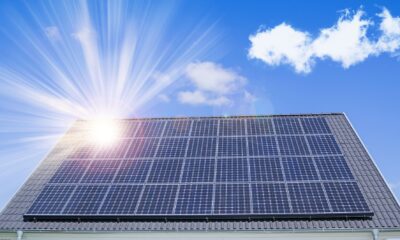
 Nyheter4 veckor sedan
Nyheter4 veckor sedanSommaren inleds med sol och varierande elpriser
-

 Nyheter3 veckor sedan
Nyheter3 veckor sedanSilverpriset släpar efter guldets utveckling, har mer uppsida
-

 Analys4 veckor sedan
Analys4 veckor sedanBrent needs to fall to USD 58/b to make cheating unprofitable for Kazakhstan
-

 Nyheter4 veckor sedan
Nyheter4 veckor sedanTradingfirman XTX Markets bygger datacenter i finska Kajana för 1 miljard euro
-

 Nyheter2 veckor sedan
Nyheter2 veckor sedanUppgången i oljepriset planade ut under helgen
-

 Nyheter2 veckor sedan
Nyheter2 veckor sedanLåga elpriser i sommar – men mellersta Sverige får en ökning



